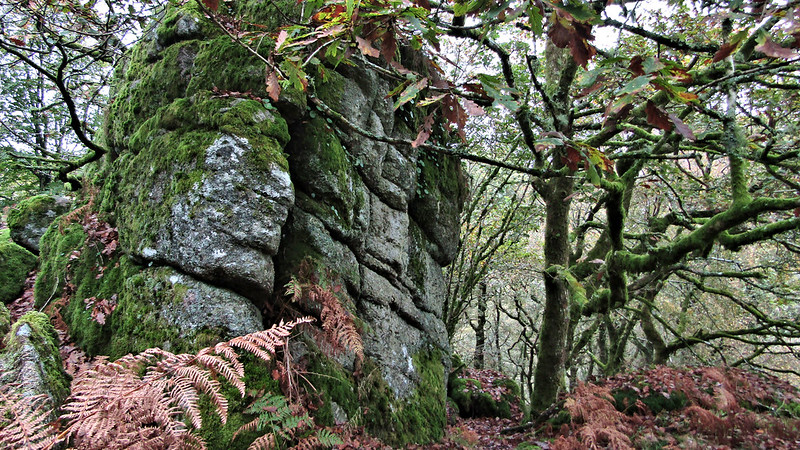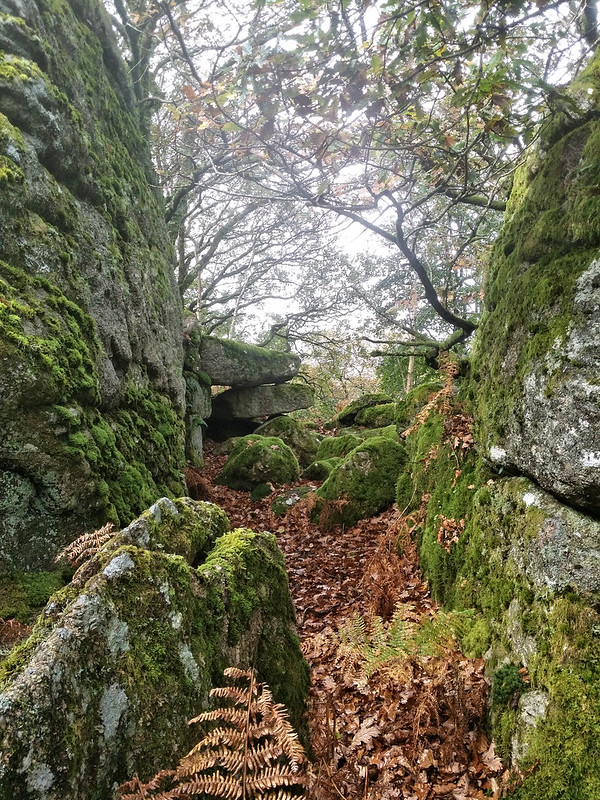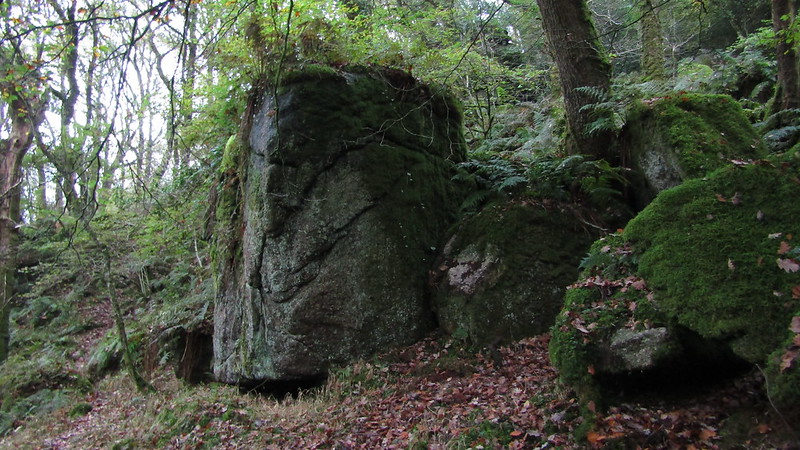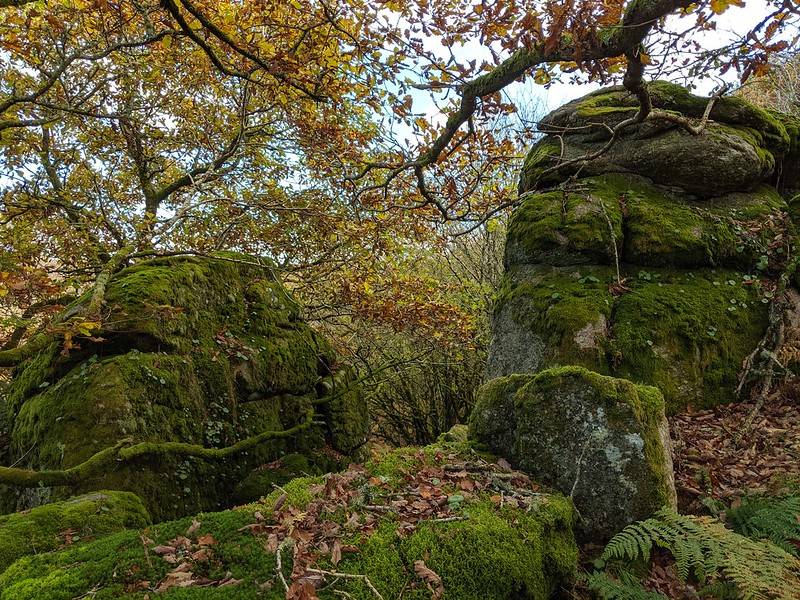TORS OF DARTMOOR
a database of both lesser- & well-known rocks and outcrops
Logwell RockLongwell Rock  Writing in the early years of the 20th Century William Crossing gives mention to Logwell Rock but neglects to give an indication of its magnificence, instead he writes: "Passing onward with Leusdon Lodge R. we bear L. to Blackaton Down, which we reach immediately above the tor of the same name. The outlying pile below the enclosures L. is usually known as Logwell Rock." It is difficult to see how the author took so little notice of the Rock's appearance as this is a fabulous tor in its own right that comprises more than one outcrop. It is only in the latter part of the same century that another commentator, in this case Terry Bound (1991), provides further details about it: "A craggy outcrop, 2 metres high on the east side, on the river-facing gradient. Massive blocks with vegetation on and around the rock."  Marked on Ordnance Survey Maps, the 'Rock' is rarely visited these days because of the difficult access and the overgrown bushes and brambles, but it is only a short way into the woods from Blackadon Tor and by handrailing a wall from there it is not too long until you come to this beautifully shaped tor. Draped in mosses of all shades and varieties and nestled within the dense canopy of trees, the rock masses here are striking and culminate in two huge stacks near the top of the hill, forming an avenue where the walker can pass between them. In autumn, when the leaves have fallen, the tor's surroundings are of a beautiful brown, the ground littered in twigs and leaves.  The upper section (at SX 7105 7343) is part involved in an old wall on the south side which indicates that prior to afforestation the Rock was a prominent landmark in the landscape used as part of a boundary divide. Indeed, a photo on the Dartmoor Trust Archive website shows just how little tree cover there was this high above the West Webburn River in the past, and one can only imagine the tremendous views that were once commanded towards Lizwell Meet. The image also contains the caption of 'Longwell Rock', which is probably a typographical error.  Below the upper outcrops the tor spills down the hill where numerous broken slabs (of which many were likely utilised to build the wall) rest at perpendicular angles to the ground, and just when you thought the tor came to its conclusion a huge boulder at SX 7100 7350 can be spotted that presents as a cuboid object from certain angles, particularly the west. The terrain in these parts can be a little bit tricky so you are advised to tread with care. Despite the initial difficulties in accessing Logwell Rock, the reader is encouraged to seek it out so that they can stand amid the wonderful piles that constitute this seldom-visited tor. Your efforts will be rewarded.
| ||||||||||||||||||||||||||||||